



And so it continues, page 2 of Collier’s collection of crater crap.
For his next image he returns to Lunar Orbiter, specifically V-
Naturally he doesn’t tell his audience that, but I can help you locate images of the area he focuses on by telling you that it is the crater Campbell, with Ley crater on its edge at the far left Here are his and my respective versions!
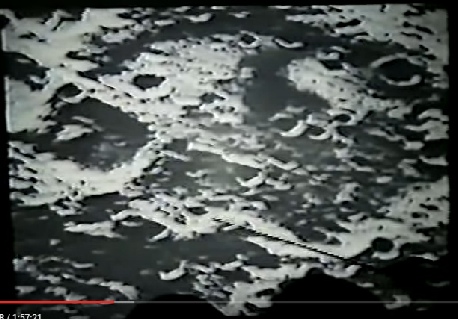
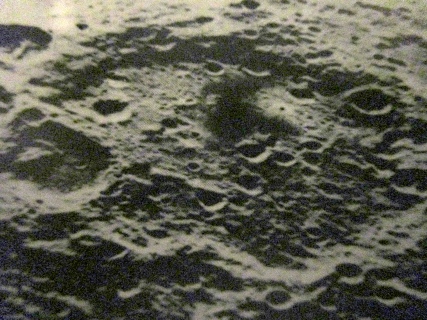
What Collier does here is his usual trick of pointing at something, demanding that his audience look at it, have lots of pregnant pauses, before finally spilling the alien beans. Here he is pointing at an area with his stick and asking that they look at it in comparison to the rest of the landscape. He says it looks different, with things unusually in a line. He then produces “another picture of it” -
He then claims that the area he’s pointing at is a base built by the UK, USSR and USA elites using alien technology in 1954. Aliens told him this. That’s right, aliens. It’s odd that he chooses this image to draw these conclusions -
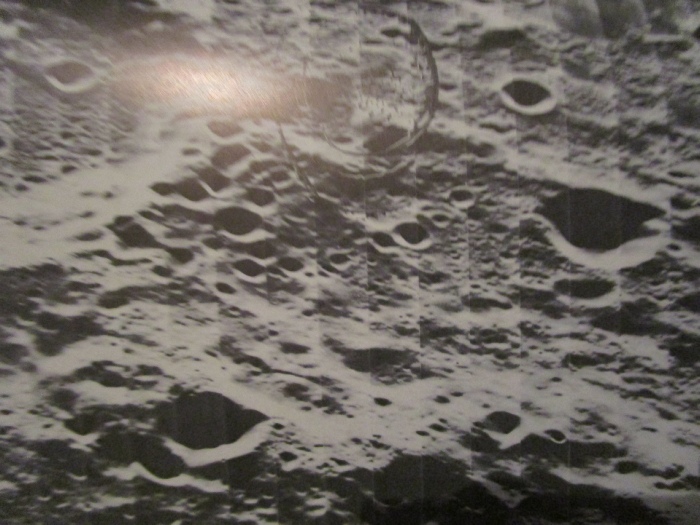
The areas that he identifies as being in line and artificial in the zoomed in area of a much larger picture are far less evident as such in this one. Also worth noting is the bright spot in the image on the edge of Ley crater. This isn’t a collapsed dome it’s my living room light reflecting off the paper. You might want to bear that in mind when considering the alleged remains of a collapsed dome from the previous page. It would be rude not to include modern images the crater just to be certain, so here are China and Japan’s views.
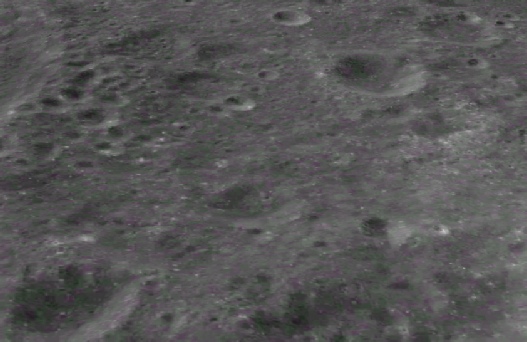
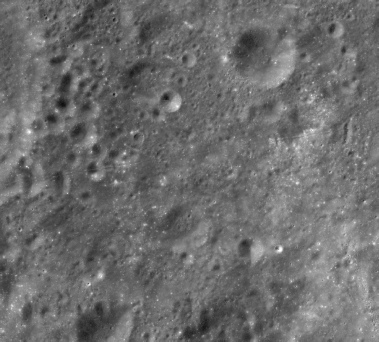
No structures, no bases, no Union Jacks, no resort villas (he says it’s a resort!).
Next up is yet another unnamed feature that I can confirm is Galois crater, south-
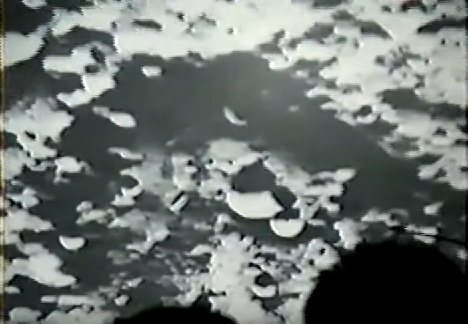
The image Collier chose to use was I-
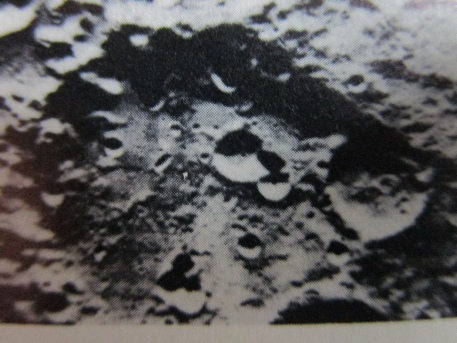
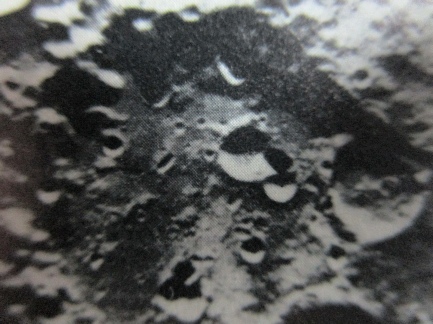
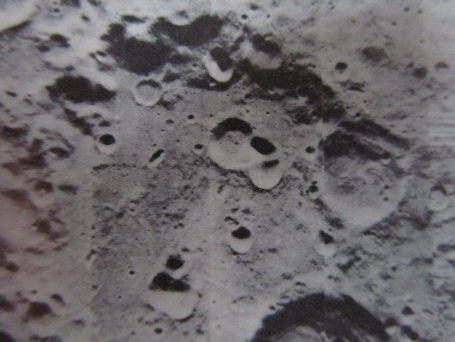
What Collier claims here is that the area he is pointing at, as well as the two larger craters in the centre of the image, are ruins of spacecraft. Other photographs available to him at the same time he was spewing forth his nonsense show otherwise -
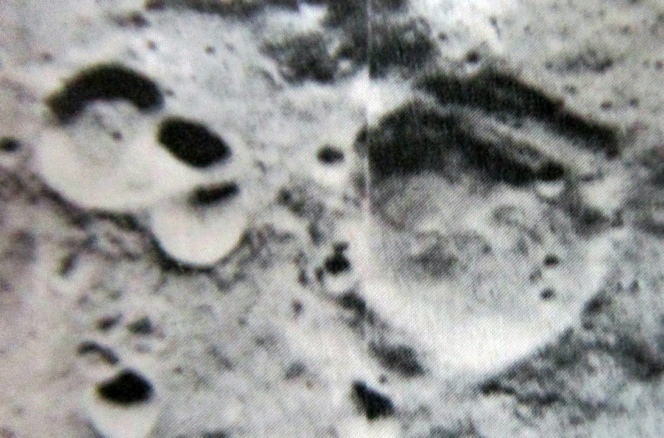
What they are are craters, nothing more, nothing less, as can be demonstrated by our Japanese and Chinese friends:
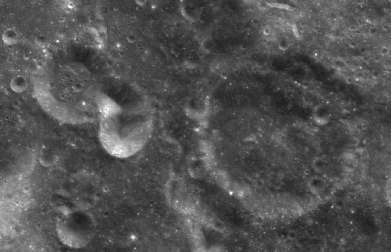
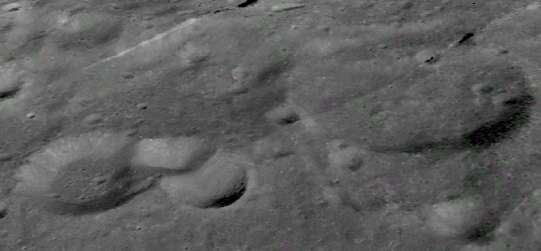
No spaceship ruins -
He looks at a little more of I-
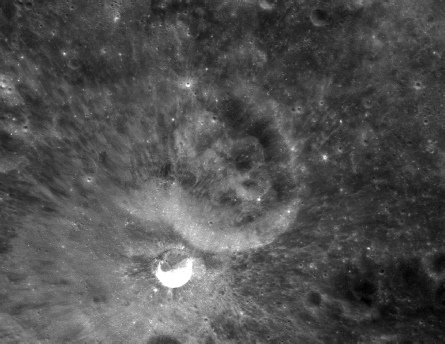
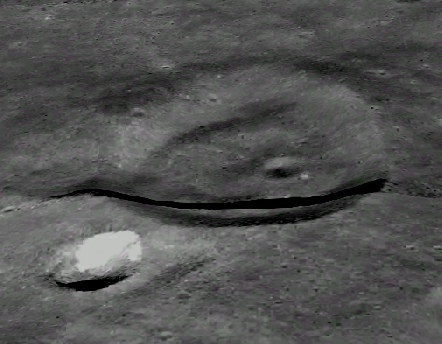
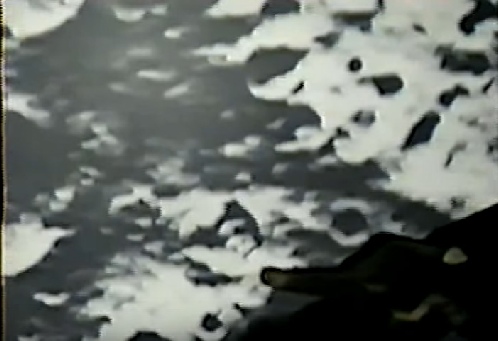
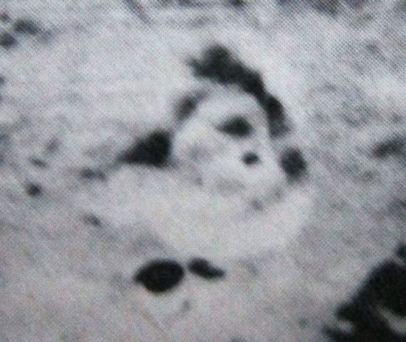
What he’s leading his audience to believe are collapsed dome walls are just the edges of a crater, as China and Japan confirm:
All he’s doing is pointing at shadows and telling his already primed audience what to believe. None of it is true.
His next one looked like it might be tricky. He has no idea of scale and as usual doesn’t bother to identify which area of the moon it is or where he sourced the image. Luckily for me I have a copy of Zdenek Kopal’s “A new photographic atlas of the moon” from 1971, and in it is this image taken by the Observatoire de Pic-
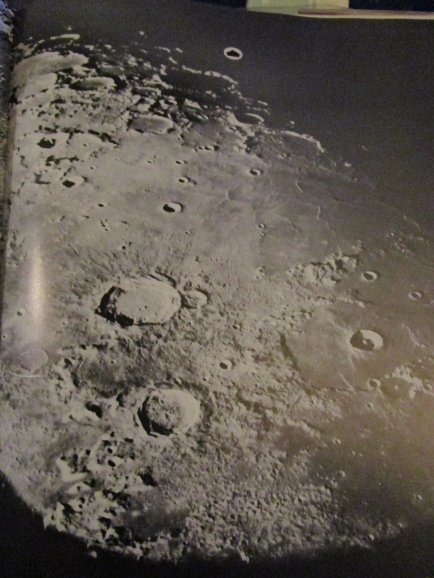
And here is the image he shows (below left) together with a close up of an area in the top left of the image above.
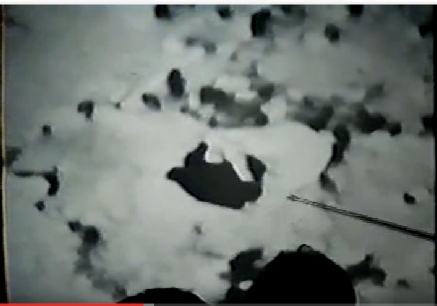
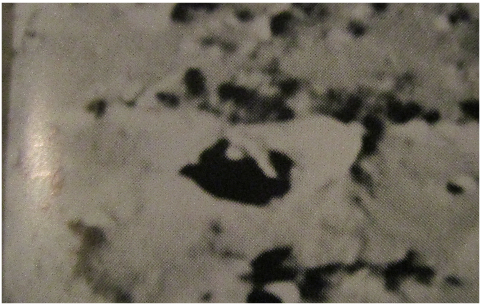
It’s obviously the same image, and my book tells me that it’s an area of Mare Frigoris, and a quick look at an atlas tells me that the crater is actually called C. Mayer. The feature Collier is identifying as a bridge is actually just a broad ridge feature in the crater, and I can further help him out by telling him it’s 11 miles from rim to centre.
Again, had he looked in more books he might have found other Lunar Orbiter images, like IV-
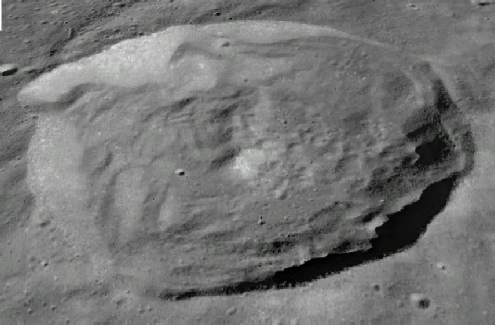
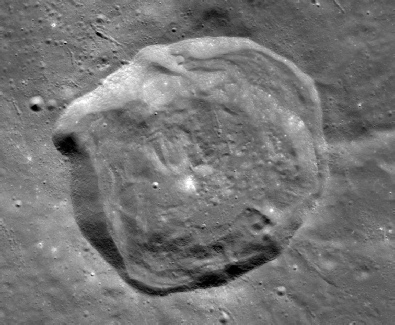
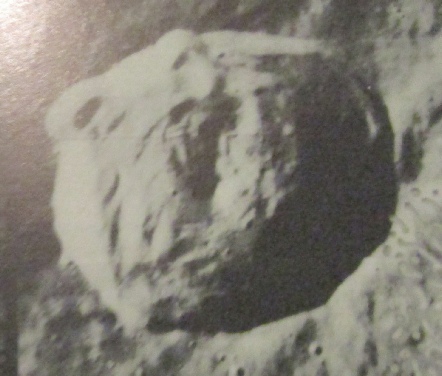
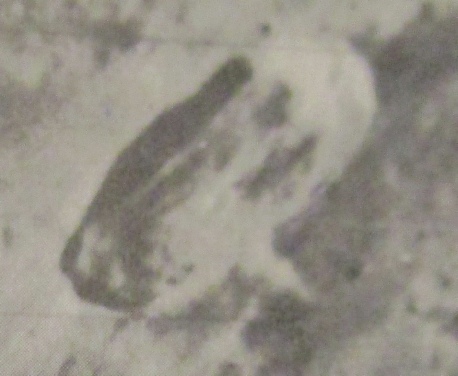
Should be fairly obvious that there is no bridge, collapsed or otherwise, and this becomes even more obvious in the modern probe images.
No bridge, no structure, photographs that Collier should have had access to if he had been bothered to look would have shown him that. Hell, even a trip to a shop selling telescopes would have shown him.
Collier again asks the question in this section as to “How did our astronauts miss this?”. Again, the reason they missed it us because their mission trajectories took them nowhere near it -
Next slide please.
And on this next slide even Alex admits he has difficulty picking out the features his alien advisors tell him are there, but hey -
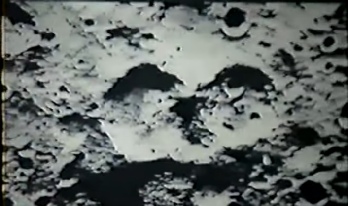
He doesn’t even bother to explain what or where the supposed ruins are that exist in these craters, but suffice to say there is nothing there that shouldn’t be, including the central peaks that he again insists should not in response to an audience comment.
Had he done some more research he could have found Apollo 10 images of these craters, like this one (below left) from my own copy of the Apollo 10 photography analysis document that was freely available from the 1970s onwards (my own was a library copy in a college). You can also find Apollo 11 (below centre) and Apollo 13 (below right) images that cover the area, and if you really want to you can look at Apollo 17’ Metric Mapping Camera images that have it in detail. Notice Alex doesn’t question astronaut views of this one.
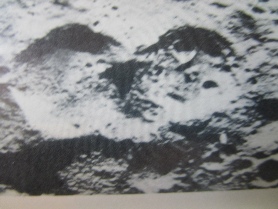
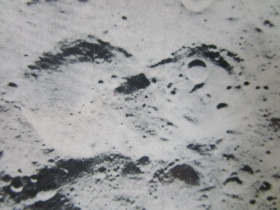
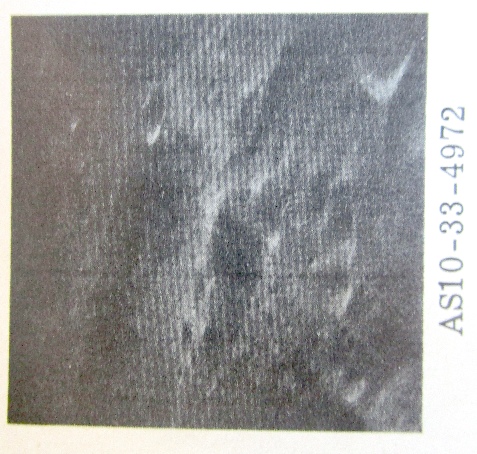
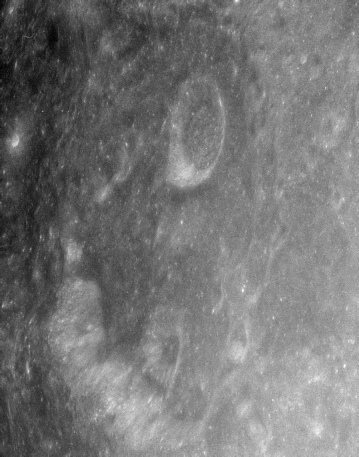
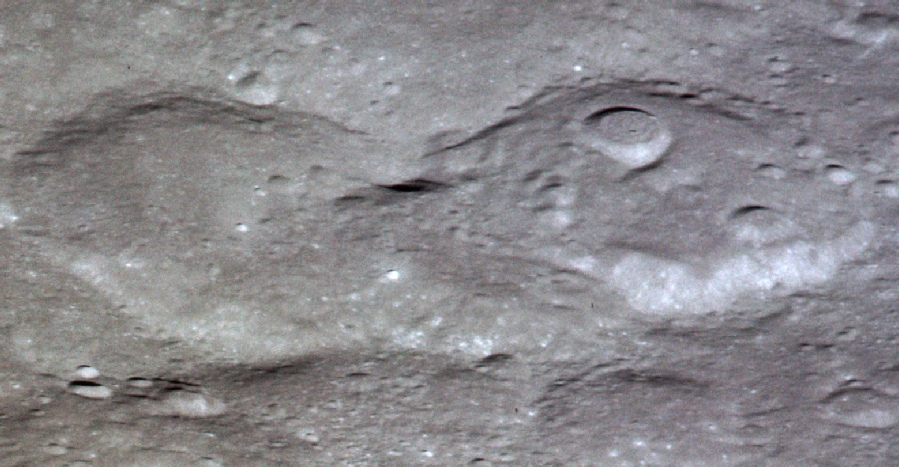
I see no ruins. I see nothing that shouldn’t be there, and neither do China or Japan:
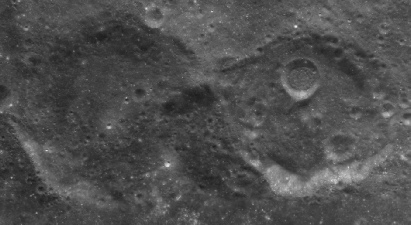
For his next slide Collier reverts to his other source, the ‘New Photographic Atlas. Here’s the slide and his close up of it followed by my proof that it’s what he’s used -
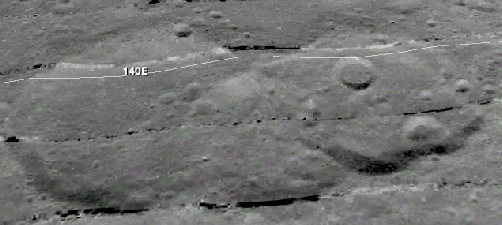
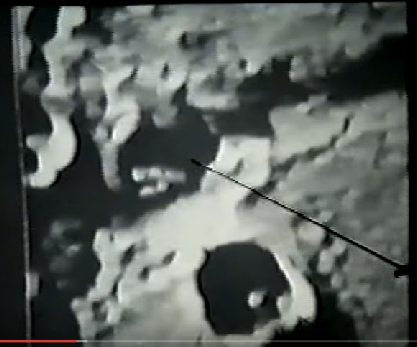
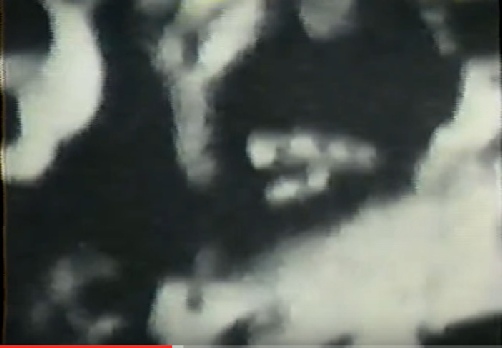
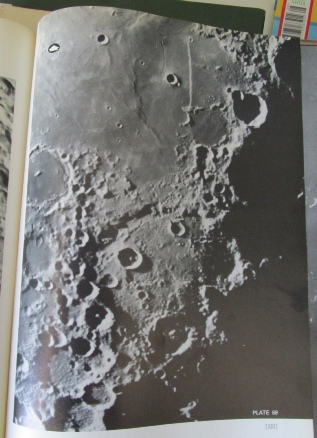
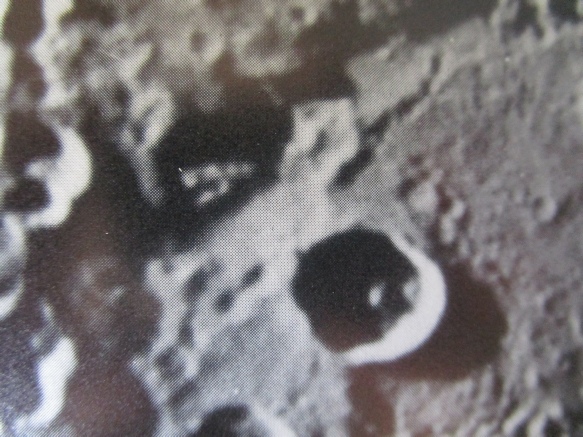
The crater is a small one on the edge of Deslandres, and the larger feature bottom centre of his first image is ‘Hell’ crater, which is where he’ll be going thanks to all the porky pies he’s been telling. This particular porky is that the crater he’s pointing at is a collection of domes lit from the inside, a conclusion he has drawn thanks to what look in the book like a series of regularly spaced bright points on the crater’s central peak.
Had he used the image on the opposite page of the book he might have noticed they are lit differently and you don’t see any pretty lights (below left. Had he bothered to investigate other books around at the time he could have found Dinsmore Alter’s 1968 ‘Lunar Atlas’, like the one I own, that has a series of images of Deslandres crater under various lighting conditions. None of them show pretty lights, and the one below right shows the peaks very nicely. Both of these feature Hell crater, as does the view from India’s probe bottom left, but bottom right is a Lunar Obiter image from the ‘Photographic Atlas’ that shows Collier’s domed city very nicely -
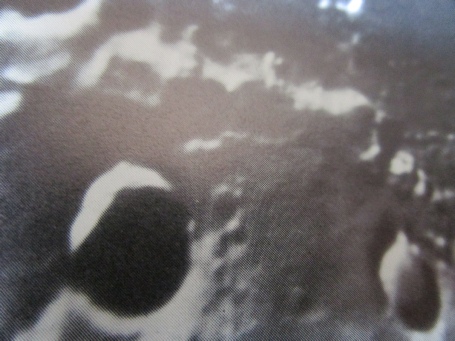
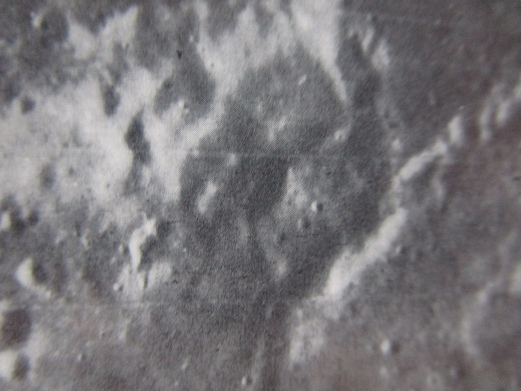
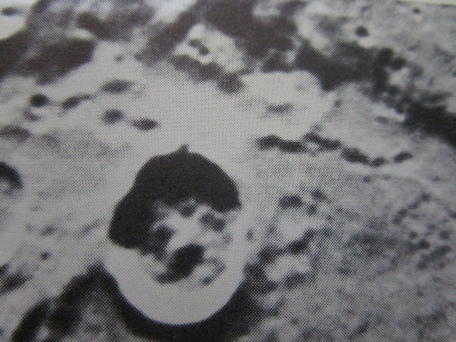
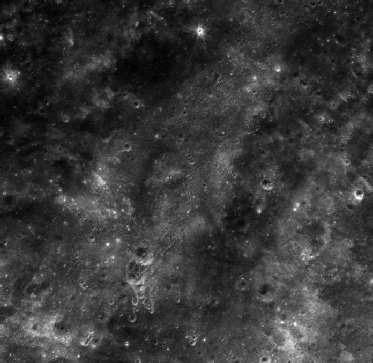
Meanwhile, our Chinese and Japanese sources show just how dependent we are on lighting to create the illusions Collier promotes -
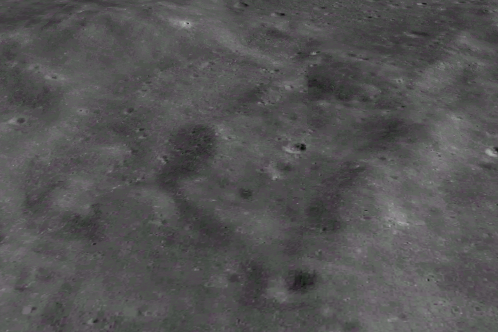
Collier sticks with Kopal’s book for his next one and hilariously gets the image both upside down and back to front, easily done in a slide show, but as a self appointed expert in these matters you’d think he’d remember what it looked like in the book. Below left is how he presented it, in the centre is it rotated and inverted, and on the right my photo from the original book.
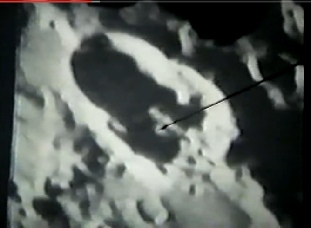
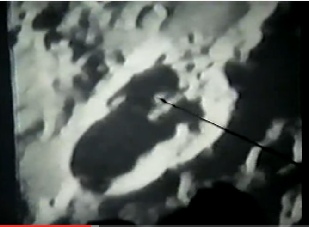
The crater is Hainzel, and like the last one is obviously visible from Earth given that the photograph was taken using a telescope. If only Alex had looked on the opposite page, he’d have seen the same crater photographed in full sunlight. Had he bothered to some more searching he’d have found this superb image of it in the Lunar Orbiter Photographic Atlas (below right) again very well lit and showing no sighs of the inhabitants burning the midnight oil in their little crater houses.
Seriously, if you’re an alien space being why build a house in a crater where you’re going to be in the dark nearly all the time? If you’re building it to hide in there, why be so dumb as to leave the lights on where they can be seen? For superior intelligence these guys aren’t that smart. Meanwhile China and Japan (below left and centre respectively) are more than capable of proving the absence of domes of any kind -
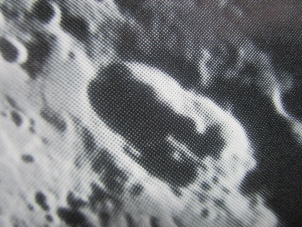
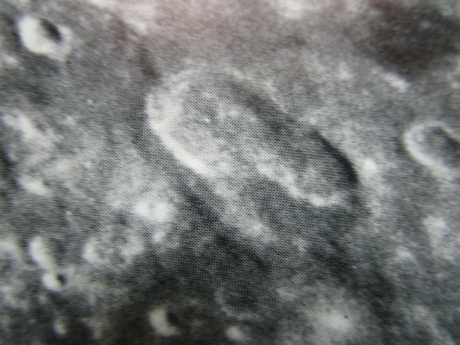
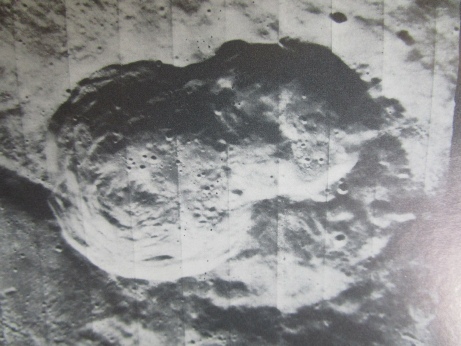
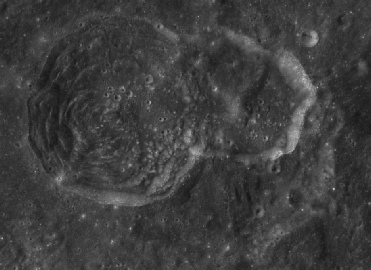
So can you -
His next slide marks a return to the Lunar Orbiter images, and this time it is V-
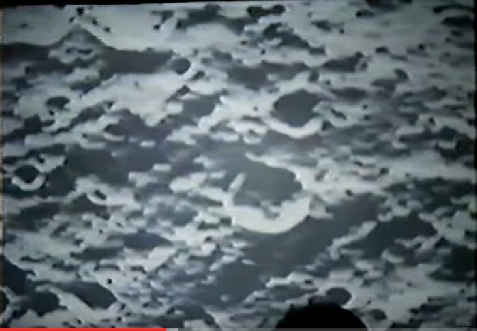
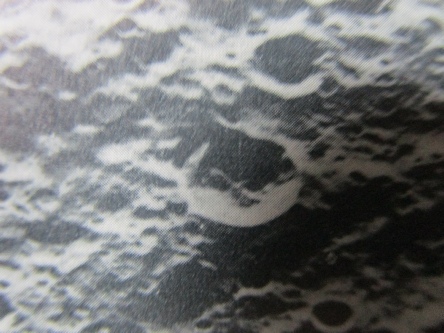
It’s actually Petrie crater, and he points out a structure going from rim to centre that he says is 13 miles long, which is interesting because it’s actually correct, which says he knows exactly where and what is. Here’s the same crater from the higher resolution shot of the same image sequence from my atlas, V-
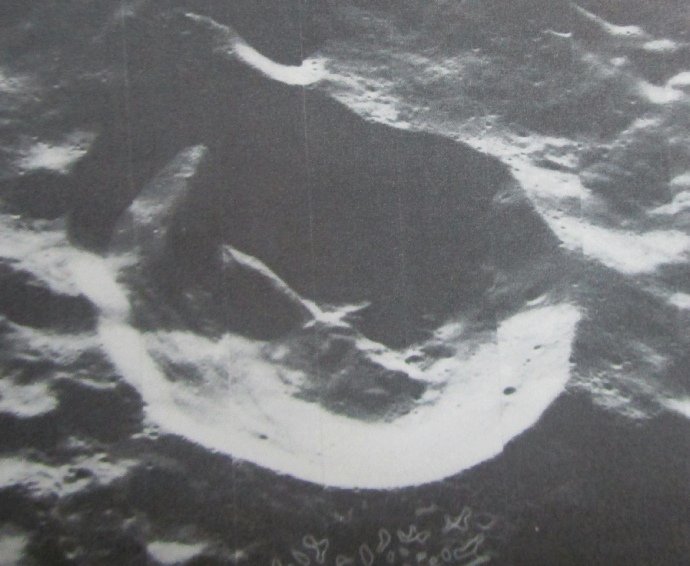
Where he fails is by saying it is “sticking up”, which even without looking at modern views of the crater and just using what was available from lunar orbiter is obviously not true -
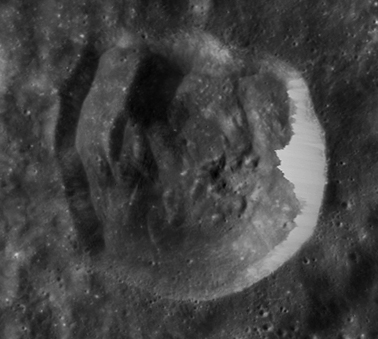
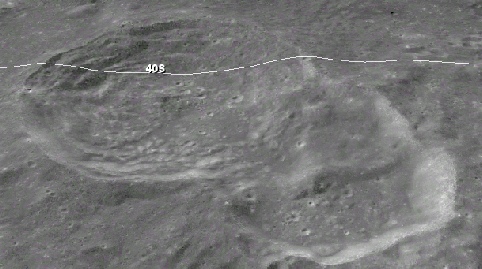
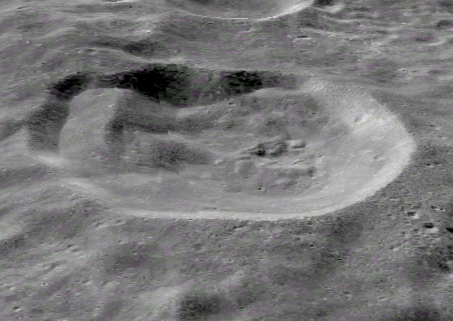
The ‘things sticking up’ theme continues with his next slide, which he at least acknowledges is form lunar orbiter. He claims it was taken from an altitude of 86000 feet and shows a 7 mile high monument to something or other. As I can find the image he uses in the same book he does, I know that it is V-
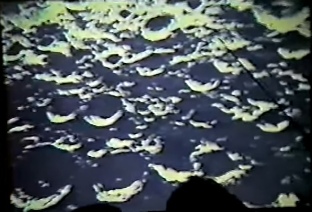
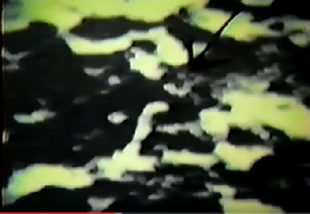
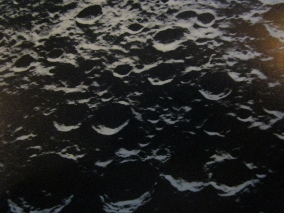
You can see the area he’s pointing at, and because we know where it is we can say that it is an area to the west of Stearns crater, and north of Steno crater. We can also find, in the Lunar Orbiter Photographic Atlas, the higher resolution version of the image, V-
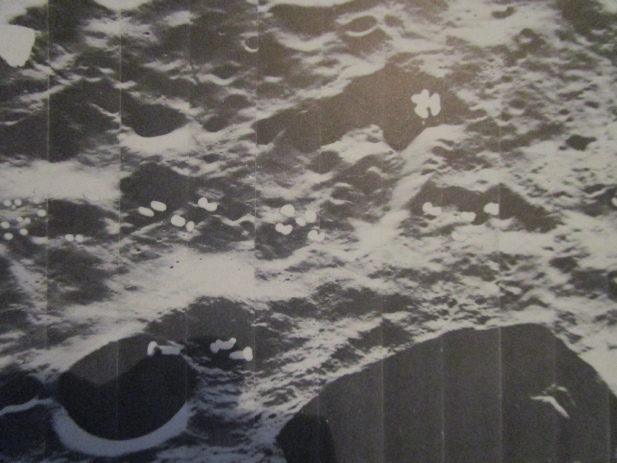
The bright area from Collier’s photograph magically transforms from being a ‘7 mile high’ monument to the 13 mile long edge of a small nondescript crater. Oops.
China and Japan are also unconvinced:
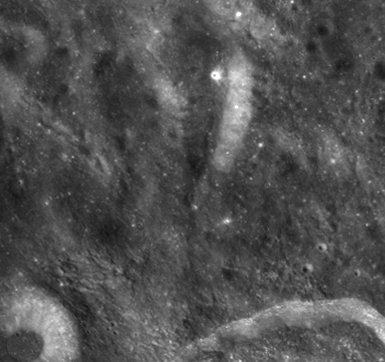
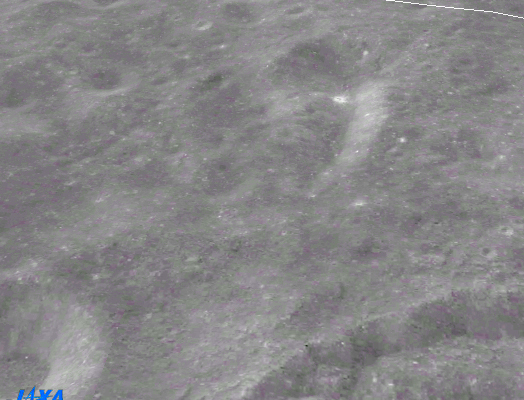
No tower, just a crater wall viewed at an angle that Collier has chosen to interpret as a vertical line.
Yet again he asks how our astronauts missed it, and yet again the answer is: because their orbits took them nowhere near it. My question to him is: “How did you miss the better photographs that were available to you that would have allowed you to draw a more sensible conclusion?”. My belief is that the answer lies in the admission fee to his talks.
Collier next reverts to Kopal’s book, and once again gets the slide the wrong way round. Here’s his version on the left compared with the book both the right way round and the way he presents it.
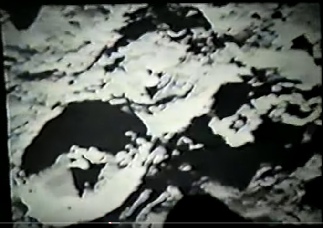
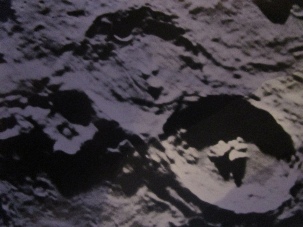
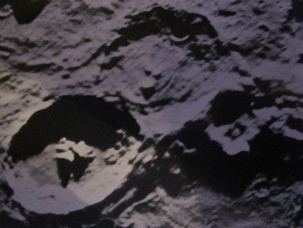
The crater in the bottom left (as he presented it) is Theophilus, and it is bordered by Cyrillus (top centre whichever image you look at it).
Collier claims that is chock full of ruins on top of a massive underground complex, with the feature on the right of his image and adjoining Cyrillus being part of an intact dome.
Unfortunately for him Theophilus was one of the most intensely studied craters during Apollo with missions 12, 14 and 16 capturing detailed images of it. None of them show any ruins, or domes or anything remotely resembling them. You can see some of the stuff I’ve done on images from this region here -
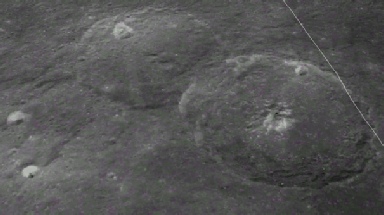
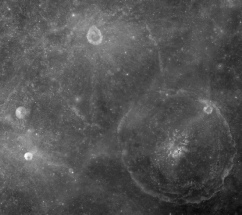
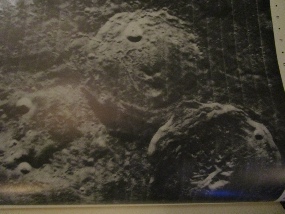
No domes. No ruins. No entrances to underground bases, just repeated lies.
The next slide is back to ‘Moon as viewed’ and features just one of those oddities of nature. The usual comparisons are below, and you can find the actual image at IV-
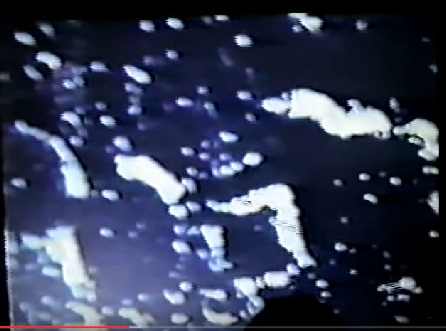
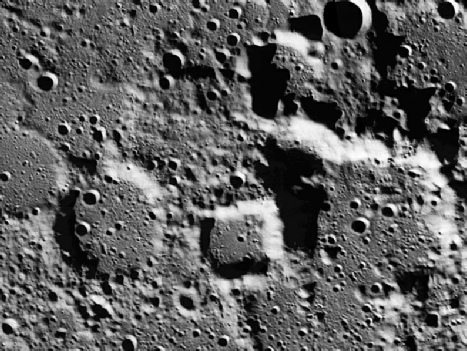
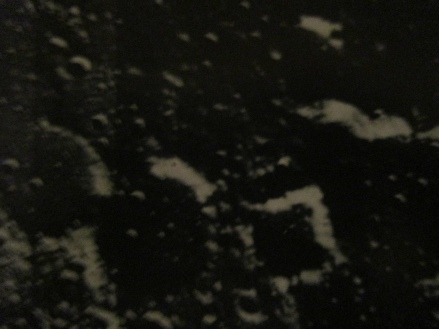
Collier makes little comment other that remarking that meteorites aren’t square, implying that this feature must be artificial. Well, other images show that it isn’t, and while square features aren’t unusual they are perfectly possible. You also have to look out our natural propensity to infer patterns from objects as well as the role of lighting in emphasising brighter features and make the shape appear more regular than it is. To make that point here’s the Chinese view of this north polar region, and next to it is a zoom of the same area with a square superimposed.
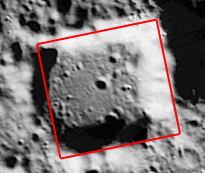
Now I’m not denying that there is a an appearance of a square to this, but when you look more closely it is much less apparent, and the left side of the crater is arguably more circular. What I am denying is any suggestion that this kind of feature is somehow impossible, or that it is anything other than natural in origin. It’s just one of those things, and is certainly possible.
Japan’s probe, for once, does not have good coverage of the area (at least in 3D), but India’s probe does.
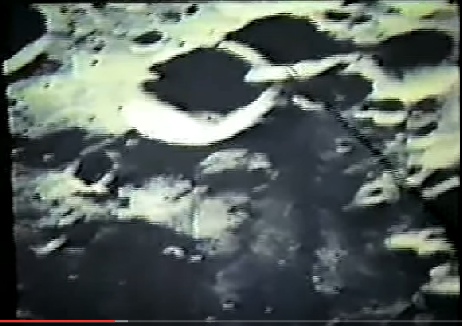
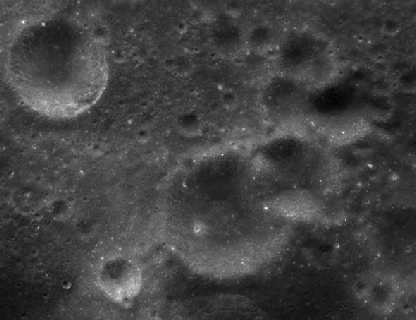
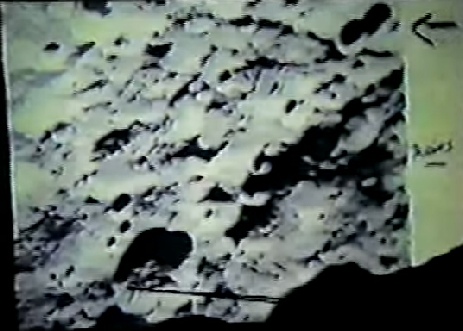
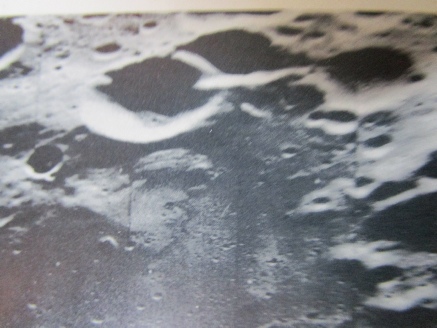
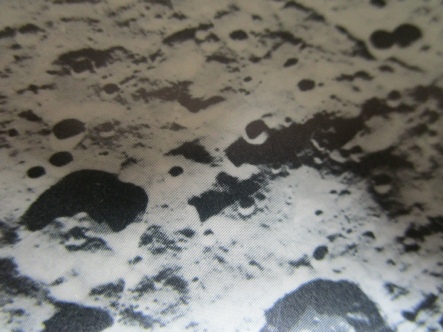
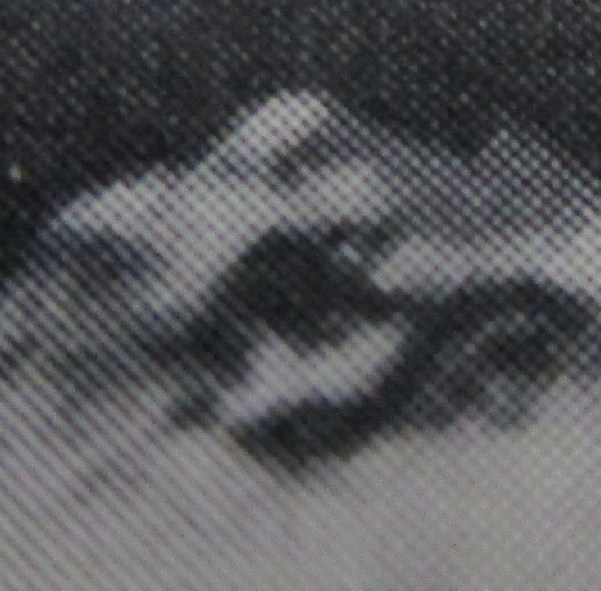
Once again lighting is playing an important part in his interpretation, that and an unwillingness to do any kind of research into how crater formation works. Rather than it being a 3 mile long spacecraft left lying on the surface, what we’re actually looking at is what happens when a crater is formed next to another crater -
That the feature we are seeing is the result of one crater overlaying another one is confirmed, as usual by modern data.
And finally, at last, before he moves on the talk bollocks about Mars and the rest of the solar system, he gives us this last lunar orbiter image from the book, this time it’s II-
In this case he is drawing attention to “Weird crossed objects” sitting in the middle of craters.
Well, it might be weird if you only see the cross part, but if you zoom in closely onto the image in the book, you can see it is not a cross at all.
What it obviously is is a central peak complex, and it only becomes a cross if you ignore the rest of it. This isn’t me taking advantage of modern technology -
Thankfully we have modern Chinese and Japanese probes to prove what absolute cock he’s talking.
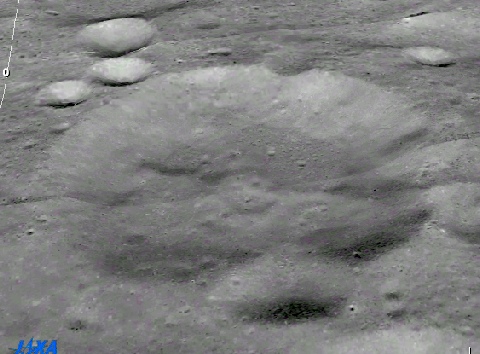
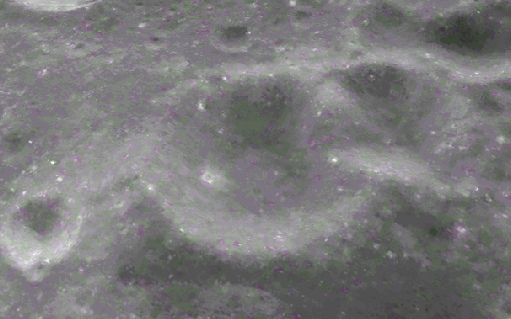
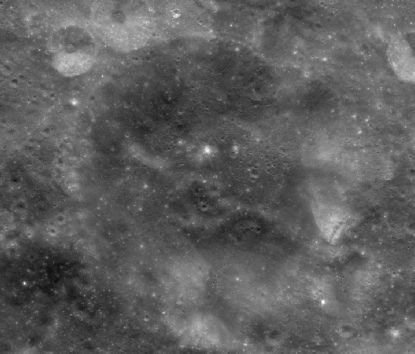
Go through the photographs. Compare and contrast. You will be able to match up the features. There are no unusual objects there. Collier’s entire premise here is that meteorite impacts that produce craters don’t produce central peaks, which is just wrong.
He moves on from here to discuss other areas for which I lack expertise. I am not an expert on Mars and I don’t possess a wealth of readily available books on the subject as I do for the moon. What I can do now is discuss Collier’s ‘work’ and draw some conclusions.
The main conclusion here is that Collier is doing the age old snake oil salesman’s trick of baffling his audience with bullshit, and relying on the good old fashioned stagecraft rule that every heckler has fallen foul of: Don’t question the man with the microphone.
His presentation is full inference and meaningful pauses. He repeatedly insists he is ‘just the messenger’, implying he is an honest purveyor of information he has been told. Let’s not forget, however, that he claims to have been told this by aliens from other worlds. This is a lie.
He relies on his audience not questioning his material, material that despite there not being much of an internet at the time was still freely available in libraries and bookshops. As far as I can tell all he has done is steal imagery from two books, take very poor images of them, drawn some arrows and charge people money to look at them. If you doubt he charges money, go to his website and see what you can get for free.
His audience are primed to believe him -
I’m happy to concede that he did not have access to a lot of the information I have, such as data from Japan and China, but in the vast majority of cases he has cited there were better images available for him to choose that would have completely disproved his claims, but he doesn’t use them. Many of his examples are lunar features that anyone can see through a telescope, but he doesn’t mention that. He claims at one point that he is sure ‘they’ blur things out so you can’t tell what they are, which is why I have gone to great lengths to use non-
Seriously, if you’ve fallen for this crap I’m sorry to have burst your bubble, but Collier is a fraud pure and simple. He relies on you not checking things out for yourself. You should. Don’t take my word for it either -
Collier’s next image identifies, he claims, an alien spacecraft lying around on the surface and hanging over the edge of a crater, this time in image V-
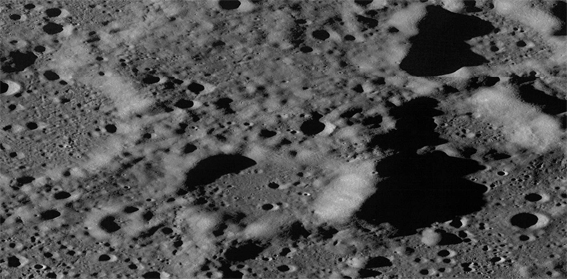
And for good measure we also have India’s contribution covering the half of the crater.
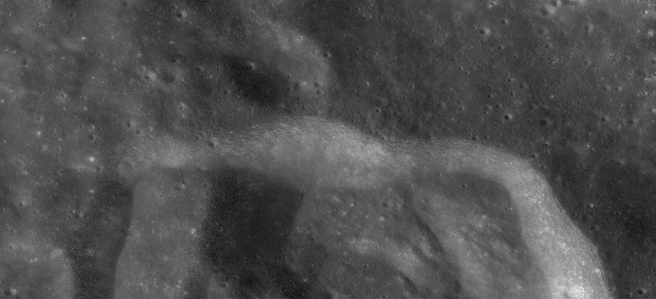

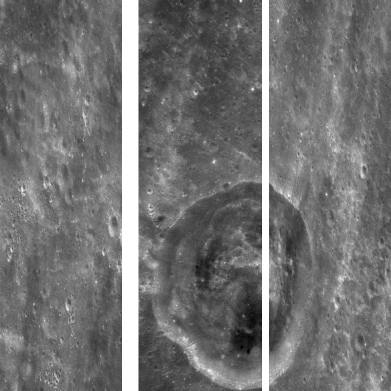
India’s Chandrayann probe covers some of Ley and Campbell crater, but not the area concerned, Here it is anyway:


India’s Chandrayan also covers a portion of the top of the area concerned: